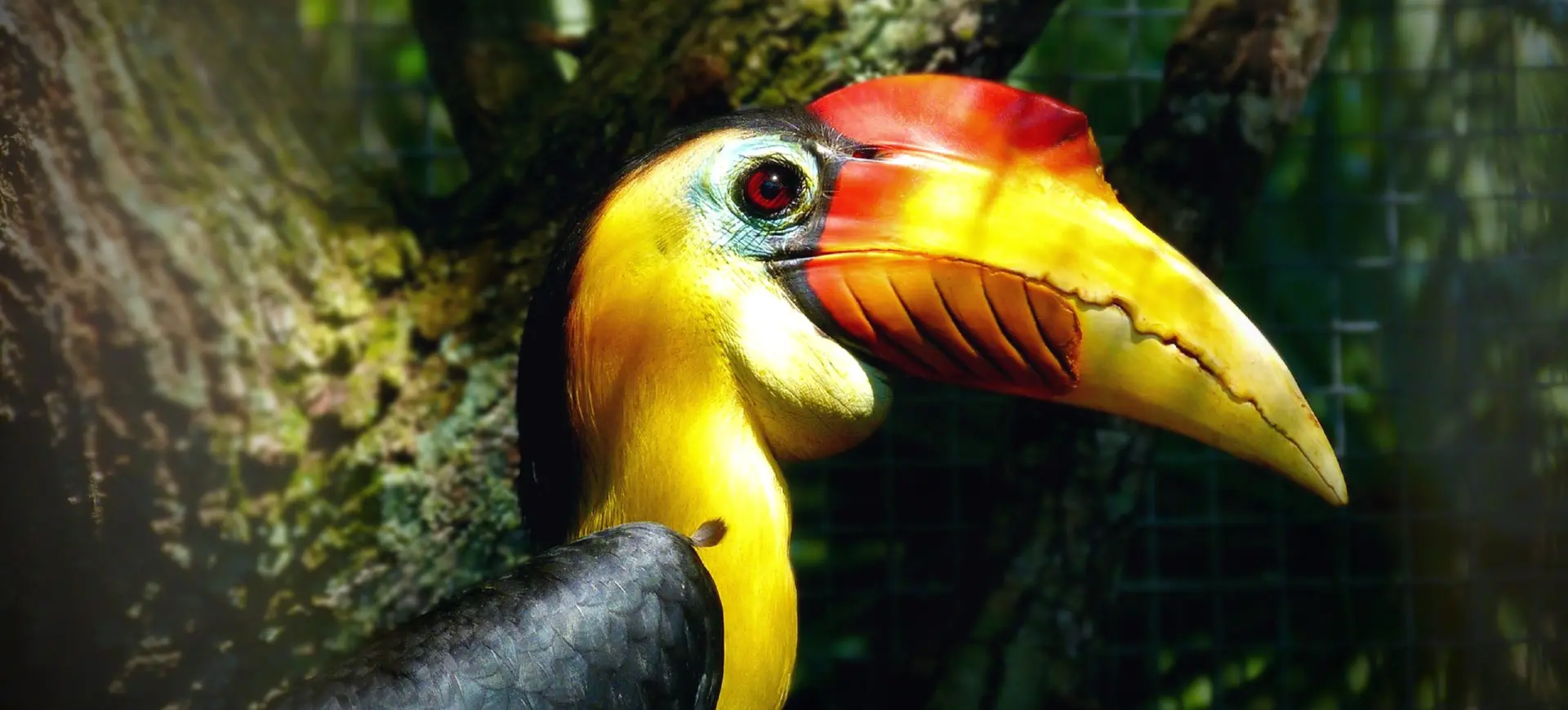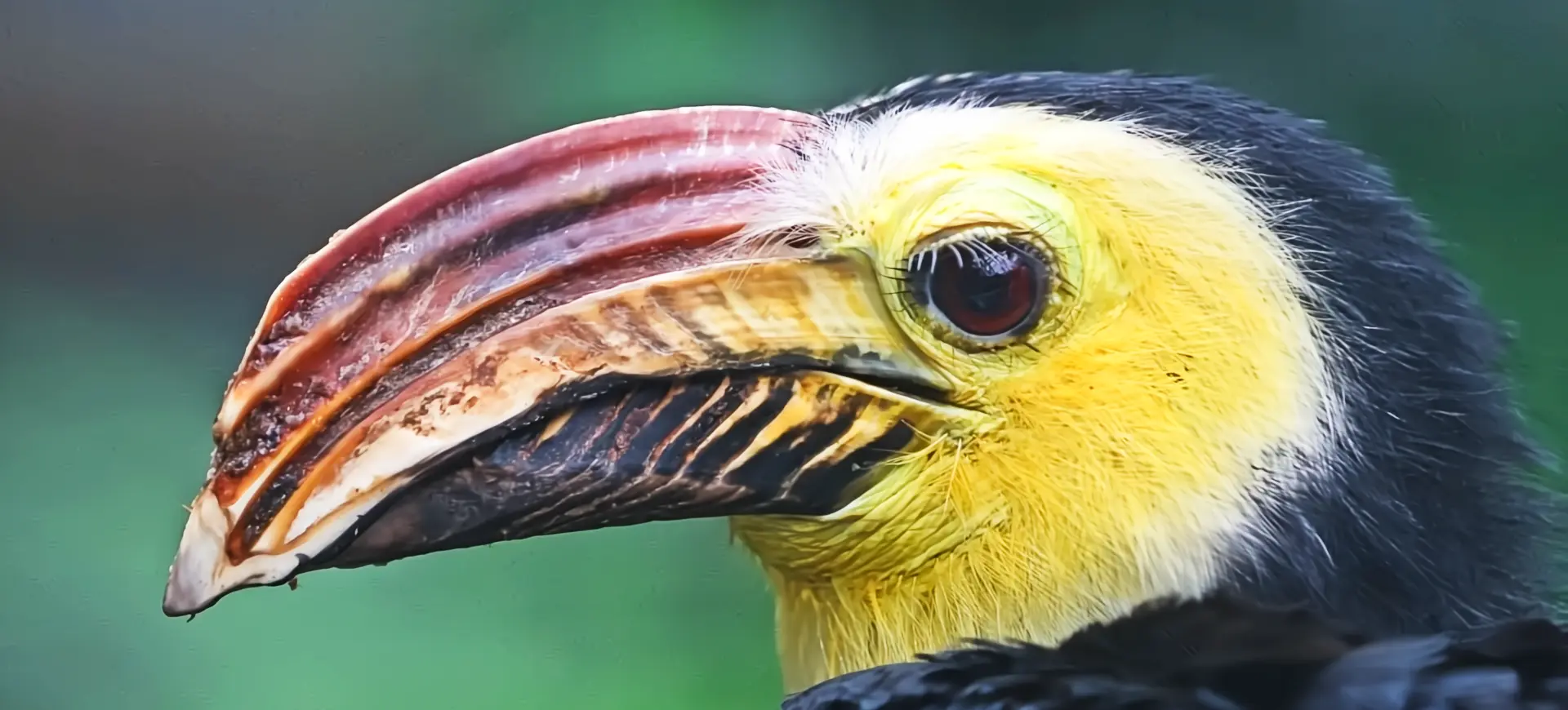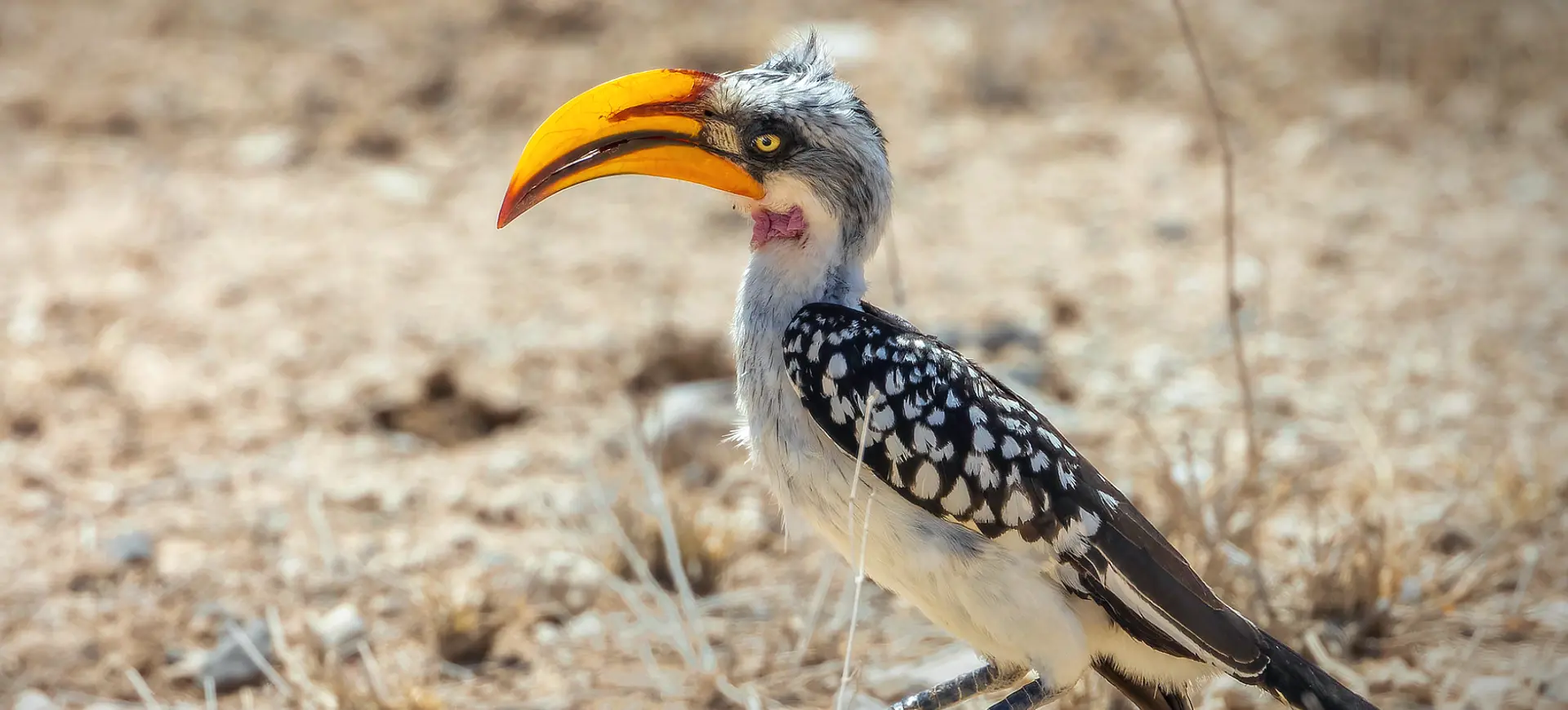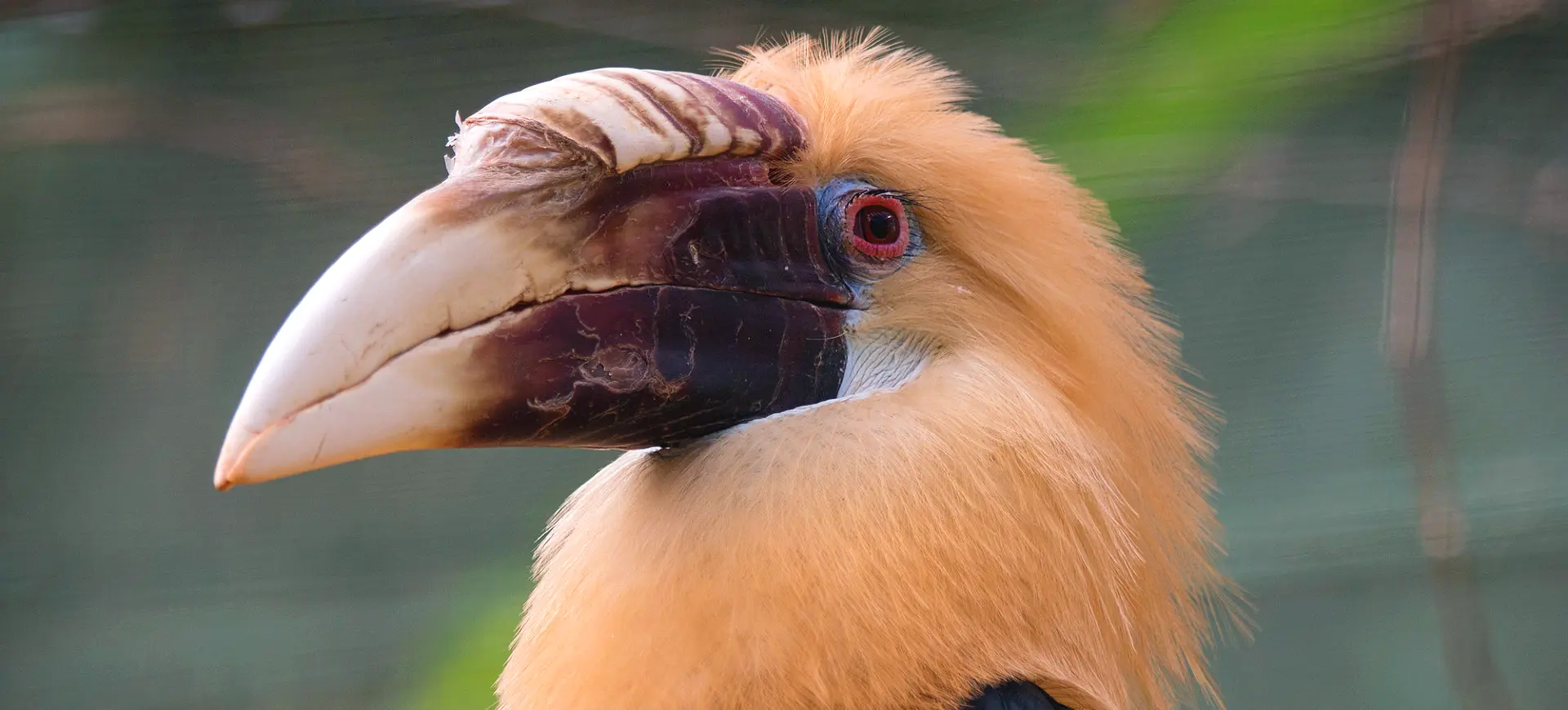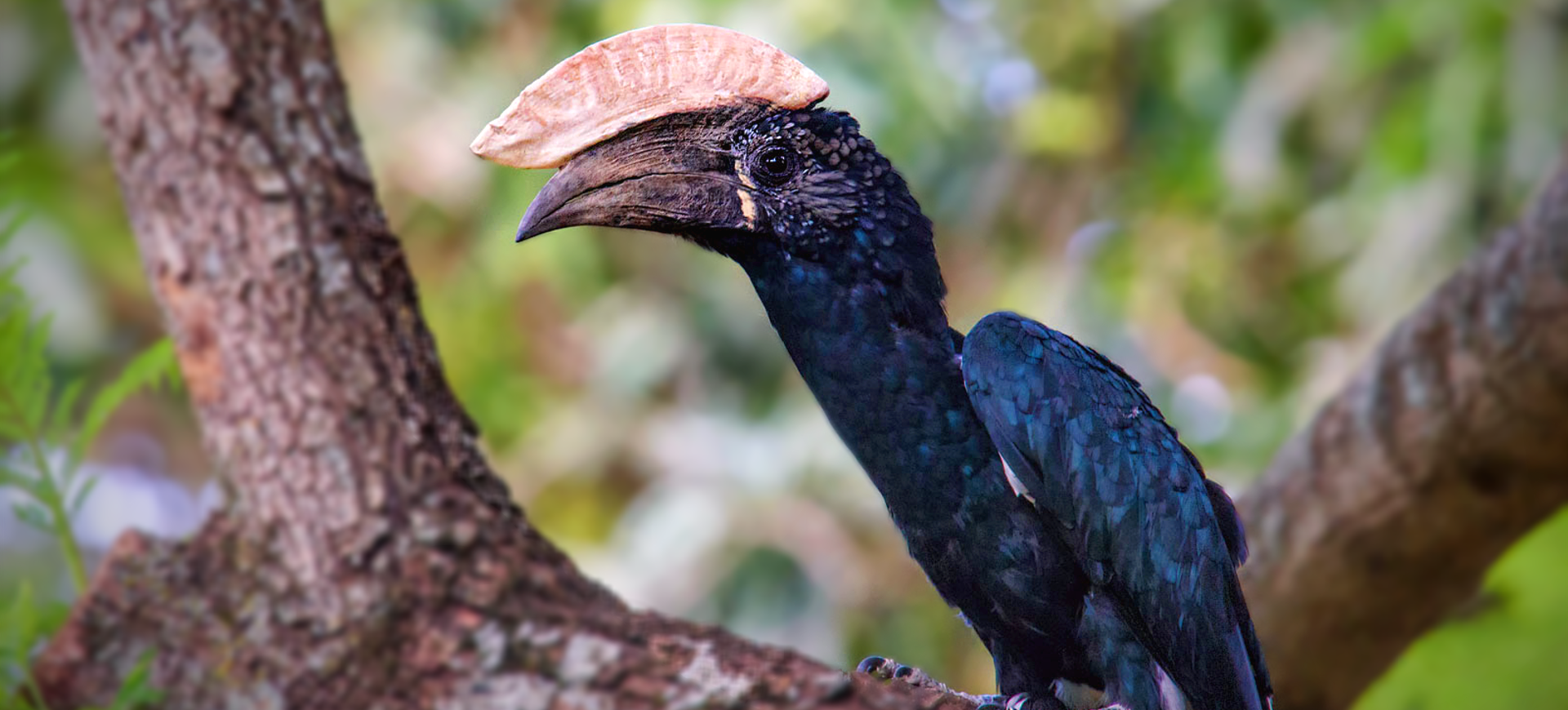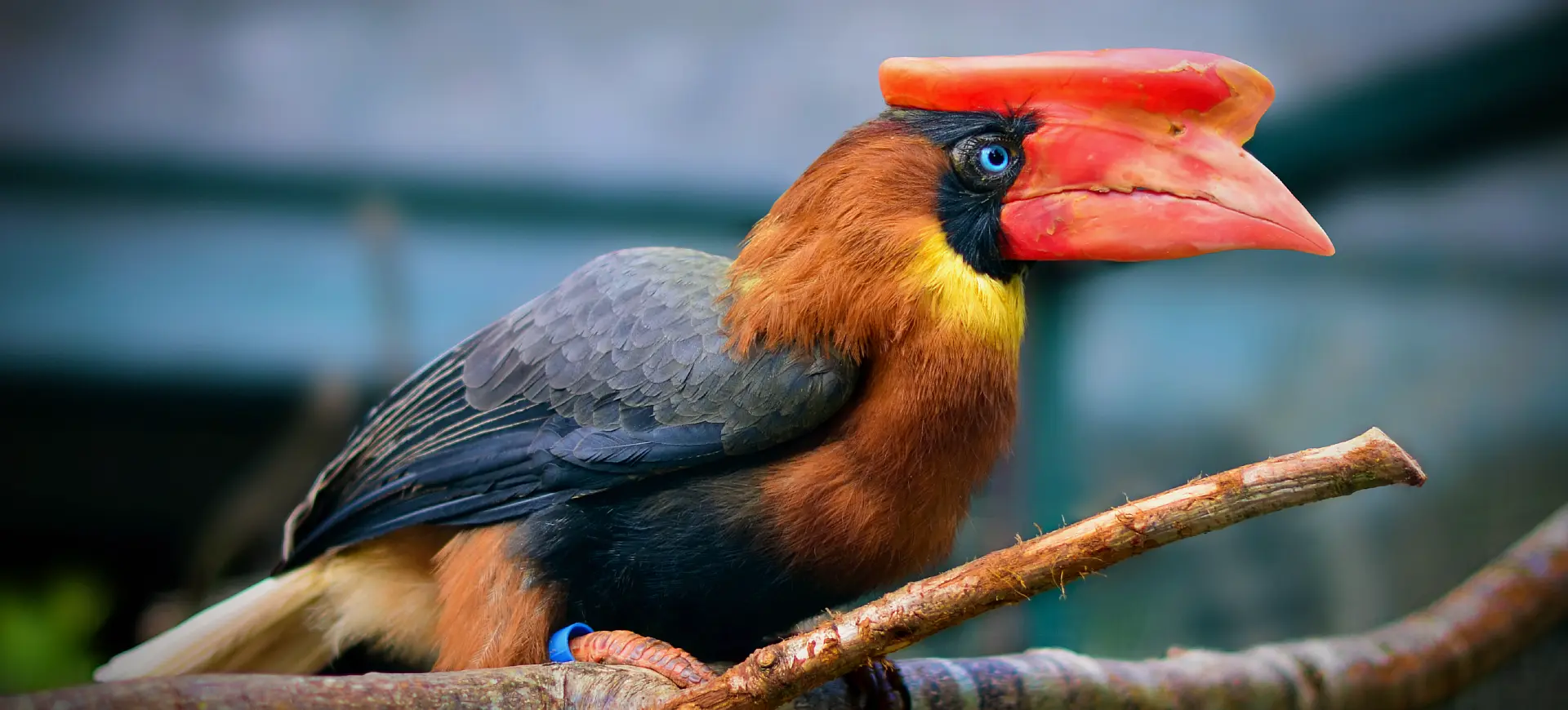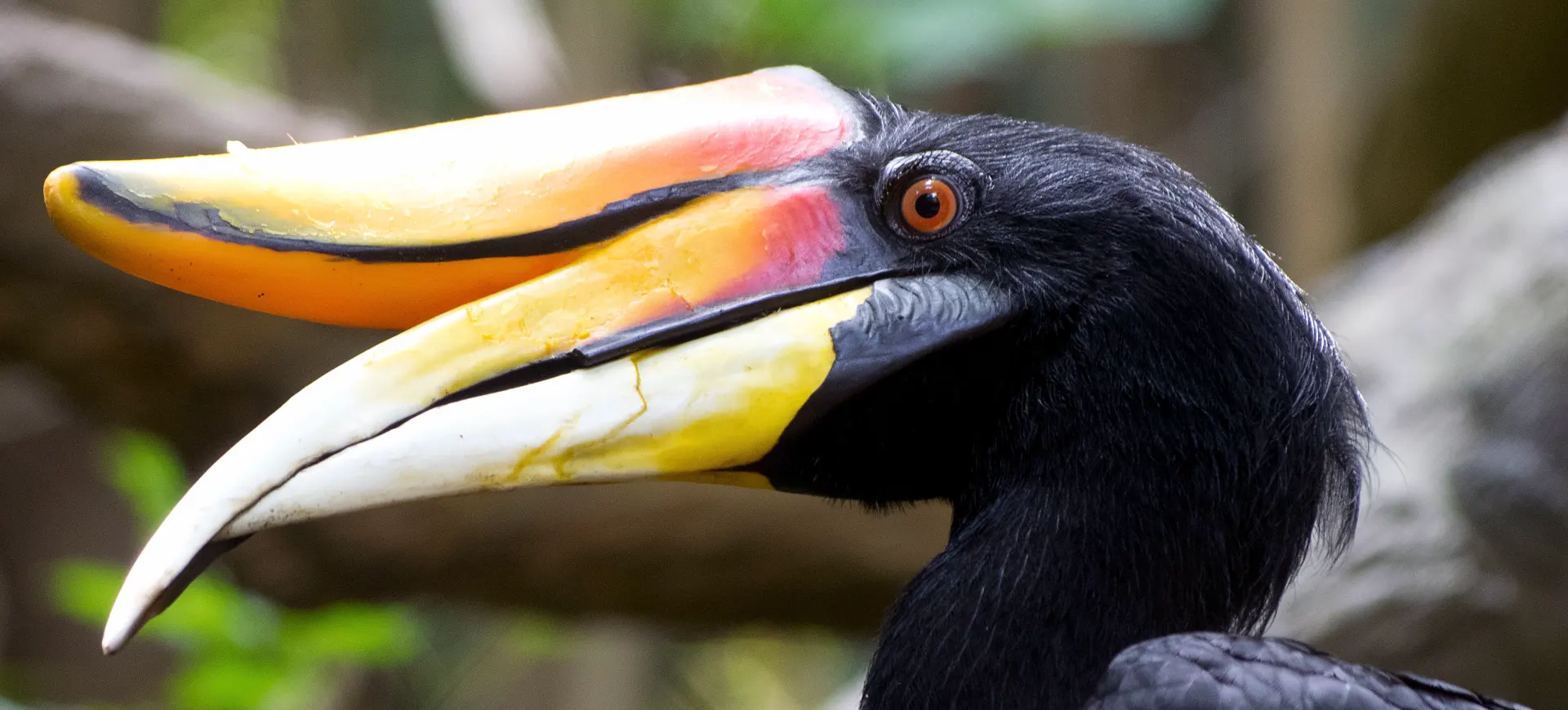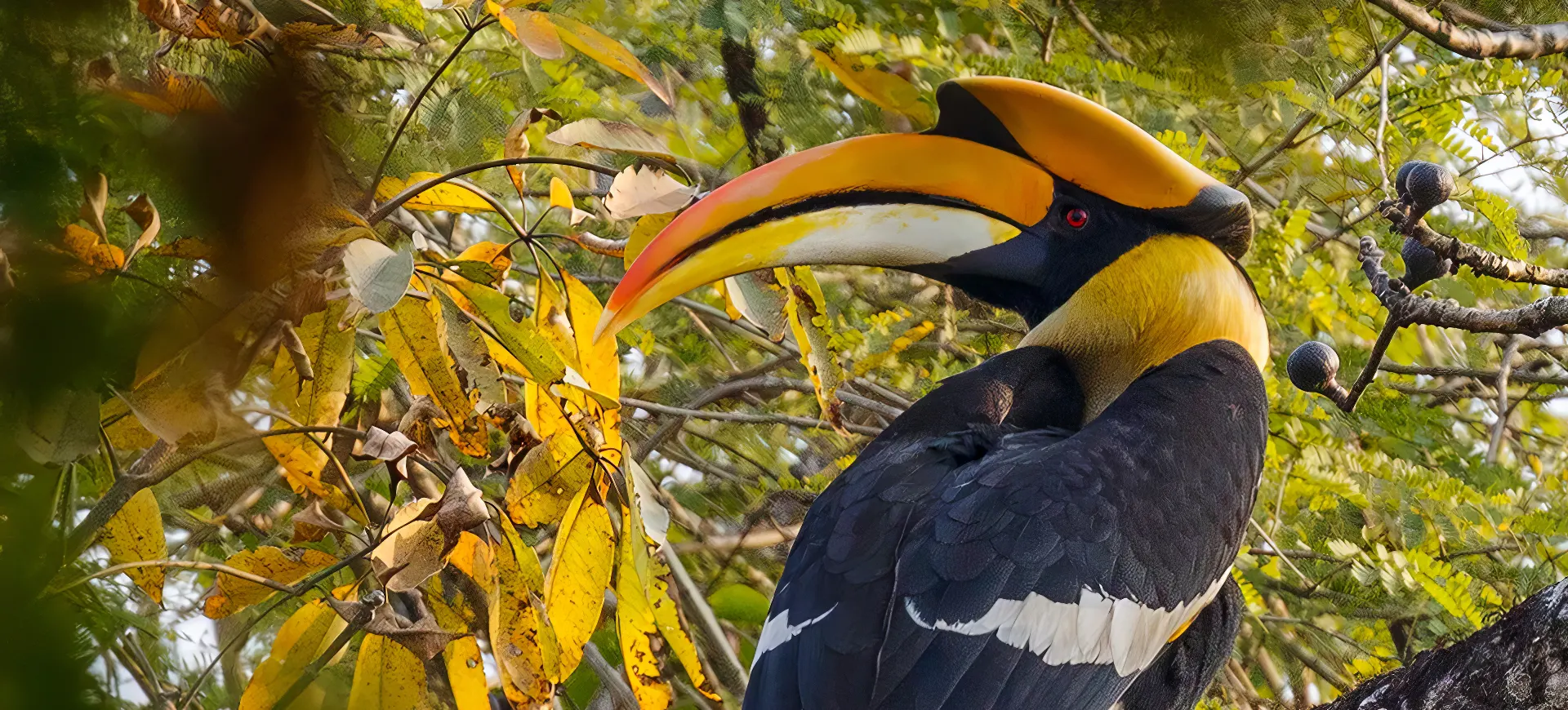Overview
The Trumpeter Hornbill, scientifically known as Bycanistes bucinator, is a striking bird native to the forests and woodlands of Africa. Recognized for its large size and characteristic long, curved bill topped with a casque, it is a member of the hornbill family. These birds are predominantly black, with white markings and a conspicuous white belly, contrasting with their dark plumage. The Trumpeter Hornbill is known for its loud, trumpeting call, often heard echoing through the forests, giving the bird its common name.
Trumpeter Hornbills are social birds, typically found in small groups, though larger gatherings can occur in areas with abundant food. They are highly vocal, using a range of calls to communicate with each other, particularly during the breeding season. These birds are arboreal, spending most of their time in the canopy, where they forage for fruits, insects, and small animals. The Trumpeter Hornbill’s ability to fly silently through the dense forest is a remarkable adaptation, enabling it to surprise prey and evade predators.
Their breeding behavior is notable, with the female sealing herself in a tree cavity nest while she lays and incubates eggs. During this period, the male provides food for the female and the chicks once they hatch. The Trumpeter Hornbill plays a crucial role in its ecosystem as a seed disperser, aiding in the regeneration of forest areas. Despite facing threats from habitat loss and hunting, these birds have managed to maintain stable populations in many parts of their range.
Taxonomy
Kingdom
Phylum
Class
Order
Family
Genus
Species
Type
Physical Description:
The Trumpeter Hornbill is a large bird, measuring approximately 23 to 25 inches long. Its most distinctive feature is the large, curved bill, which is black and topped with a casque—a growth believed to amplify its calls. The bird’s plumage is primarily black, with a white belly and white accents on the wings and tail. The eyes are surrounded by a patch of bare, dark skin, a common characteristic of hornbills.
Sexual dimorphism in Trumpeter Hornbills is minimal, though males tend to have larger bills and casques than females. Their strong, zygodactyl feet—two toes facing forward and two backward—are well-adapted for gripping branches and perching in trees. The wings of the Trumpeter Hornbill are broad and rounded, enabling powerful flight, which is essential for moving through their forested habitat. Their tail is long and helps with maneuverability and balance during flight.

Lifespan: Wild: ~20 years || Captivity: ~30 years

Weight: Male: 1.8-2.6 lbs (0.8-1.2 kg) || Female: 1.6-2.4 lbs (0.7-1.1 kg)

Length: Male & Female: 23-25 inches (58-64 cm)

Wingspan: Male & Female: 36-39 inches (91-99 cm)

Top Speed: Unknown
Characteristic:
Native Habitat:
The Trumpeter Hornbill is native to the forests and woodlands of sub-Saharan Africa. Their preferred habitat includes dense forests, riverine woodlands, and coastal forests, where they find ample food and nesting opportunities. These birds depend on large trees for nesting, requiring cavities for their unique breeding behavior. Their loud calls often indicate their presence in these habitats, which resonate through the forest canopy.
The adaptability of the Trumpeter Hornbill to different forest types has been key to its survival. However, habitat loss due to deforestation and human encroachment is a growing concern. Conservation of their habitat is crucial for preserving this species and the overall health of the ecosystems they inhabit.
Climate Zones:
Biogeographical Realms:
Continents:
Diet:
Diet & Feeding Habits:
Trumpeter Hornbills are omnivorous, with a diet that includes fruits, insects, and small animals. They are particularly fond of figs and other fruits, which constitute a significant part of their diet. Their foraging behavior involves plucking fruits from trees or catching insects and small animals in flight. Their bill and casque structure are well-suited for handling various food items, from hard seeds to slippery prey.
These birds play an important role as seed dispersers in their ecosystems, contributing to the health and diversity of their forest habitats. Their feeding habits change with the seasonal availability of food, demonstrating adaptability to varying environmental conditions. The social aspect of feeding is prominent in Trumpeter Hornbills, with group members often foraging together and sharing large food finds.
Mating Behavior:
Mating Description:
Trumpeter Hornbills have a unique and fascinating breeding behavior. The female seals herself inside a tree cavity, using her droppings and food remains to reduce the entrance to a small slit. This behavior protects the eggs and chicks from predators. The male plays a crucial role during this period, as he is responsible for feeding the female and later the chicks through the slit in the tree cavity.
The female lays two to three eggs, which she incubates for about 24 days. Once the chicks are hatched, both parents are responsible for feeding them. The female eventually breaks out of the nest when the chicks are large enough, and the family continues to live together for some time. This unique breeding strategy is essential for the survival of the offspring, as it provides a safe and secure environment during the most vulnerable stages of their development.
Reproduction Season:
Birth Type:
Pregnancy Duration:
Female Name:
Male Name:
Baby Name:
Social Structure Description:
Trumpeter Hornbills are social birds, often seen in small groups, especially outside the breeding season. These groups can range from a few individuals to larger gatherings, particularly in abundant food areas. The social structure is not rigid, allowing for group composition and size flexibility. Social interactions are key to their behavior, including communal roosting and cooperative feeding.
After the breeding season, the family may stay together for some time before the young disperse to join other groups or form their own. The social nature of the Trumpeter Hornbill is beneficial for foraging efficiency and predator detection, as group members can alert each other to threats and share information about food sources.
Groups:
Conservation Status:
Population Trend:
The Trumpeter Hornbill population is currently classified as stable, with widespread species across sub-Saharan Africa. They are relatively common in areas with suitable forest habitats, especially protected regions. However, the species is not immune to threats, with habitat loss and degradation being the primary concerns. The Trumpeter Hornbill’s dependence on large, mature forests for nesting makes it vulnerable to deforestation and habitat fragmentation.
Conservation efforts are focused on habitat protection and sustainable forest management to ensure the continued survival of this species. Monitoring and research are ongoing to better understand the population dynamics and habitat requirements of the Trumpeter Hornbill, which are crucial for effective conservation planning.
Population Threats:
The main threat to the Trumpeter Hornbill is habitat loss due to deforestation and human encroachment. Logging, agricultural expansion, and urban development are reducing the availability of suitable forest habitats. This loss of habitat affects their nesting and foraging areas and leads to fragmentation, which can isolate populations and affect genetic diversity.
Additionally, Trumpeter Hornbills are hunted for food and traditional medicine in some parts of their range. Although not a major threat, this practice can impact local populations. Climate change is also a concern, as it could alter the ecosystems they depend on, affecting food availability and breeding sites.
Conservation Efforts:
Conservation efforts for the Trumpeter Hornbill include habitat protection and sustainable forest management. Protecting and restoring forest habitats are crucial for maintaining healthy populations. Efforts are also made to raise awareness about the species and its role in the ecosystem, particularly in regions where human encroachment is a concern.
Research and monitoring of Trumpeter Hornbill populations help understand their ecology and plan effective conservation strategies. Involving local communities in conservation efforts is key, as sustainable practices can benefit both the species and the people living near their habitats.
Additional Resources:
Fun Facts
- The Trumpeter Hornbill’s casque (the bump on top of its bill) is not solid; it’s a honeycomb-like structure that makes it lightweight.
- They are known for their loud, trumpet-like calls, which can be heard over long distances and are used to communicate with other hornbills.
- Trumpeter Hornbills can catch food in mid-air, a skill they often use to snatch insects or small prey while in flight.
- These birds cannot swallow food caught at the tip of their beak due to its length and curvature, so they toss it back to the throat with a characteristic head flick.
- The female loses her flight feathers during the nesting period, rendering her flightless until the chicks are ready to leave the nest.
- The Trumpeter Hornbill plays a significant role in African folklore and is often featured in stories and myths.
- They have a mutualistic relationship with certain tree species, as they aid in seed dispersal through their fruit-eating habits.
- Unlike many other hornbill species, the Trumpeter Hornbill has no pronounced sexual dimorphism in coloration.
- In some regions, they are known to visit suburban gardens, especially where fruit-bearing trees are present.
- Their long eyelashes are a unique feature among birds and help protect their eyes from debris while flying through the forest.





